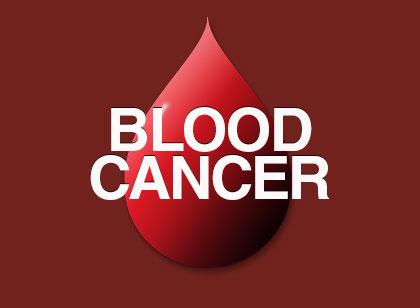


What you need to know about blood cancers

The majority of blood cancers (or hematologic cancers) that affect the production and function of blood cells, primarily begin within the bone marrow or the blood. Blood cells arise from stem cells, which specialize (develop to perform a specific function), lymphoid stem cells develop to form lymphocytes (a type of white blood cell), while myeloid stem cells form into either red or white blood cells, or platelets. When this physiological process is disturbed by the proliferation of abnormal blood cell types (that are cancerous), it leads to malfunctioning, or the inability to fight infection or prevent bleeding.
The collection of blood cancers affect the blood, lymphatic system, and bone marrow. There are three main types:
Leukemia
Affects the white blood cells (responsible for fighting infection). White blood cells are produced in the bone marrow, yet among those with leukemia, these white blood cells produce abnormally causing a disruption in the production of red blood cells and platelets. Lymphocytic leukemia affects the lymphocytes, while myeloid leukemia affects the myeloid cell line. Leukemia can either be acute (fast progression, requiring urgent intervention), or chronic (slowly progressing, developing over months to years).
Leukemia has four main sub types:
Acute myeloid leukemia (AML) – adults and children affected
Acute lymphoblastic leukemia (ALL) –primary leukemia affecting children
Chronic myeloid leukemia (CML) – the rarest leukemia, mainly affecting adults
Chronic lymphocytic leukemia (CLL) – Most common among adults over 65 years of age
Other types of leukemia, such as hairy cell leukemia (HCL), T-cell acute lymphoblastic leukemia (T-ALL), and more characterize fewer cases. Leukemia symptoms may include:
Anemia
Shortness of breath
Weakness
Susceptibility to infection
Swelling of the lymph nodes
Myeloma (multiple myeloma)
Plasma cells produce antibodies that fight infection. Cancer of the plasma cells (a type of white blood cell) develops among abnormal plasma cells (myeloma cells) that overcrowd the bone marrow, preventing the production of other blood cells, compromising immune system defense mechanisms. Bones become increasingly brittle as tumors secrete chemicals that act on surrounding cells – causing loss of calcium in the bones.
Symptoms of myeloma become more noticeable as the cancer progresses and include:
Bone pain (in the back, hips and chest)
Nausea
Fatigue
Extreme thirst
Numbness (or weakness) in the legs
Itching
Lymphoma
This type of blood cancer affects lymphocytes mainly of the lymphatic system but may effect lymphoid tissue found elsewhere in the body such as the spleen, digestive tract, and tonsils. These abnormal lymphocyte cells (lymphoma) multiply and accumulate, which eventually spread from the lymph nodes to other areas of the body.
The two main types of lymphoma:
Non-Hodgkin lymphoma – over 30 types exist, some of which can be aggressive (fast growing), or slow-growing. Cancer development starts within the lymphatic system and affects either the B- or T-lymphocytes. This type of cancer is most common in older adults.
Hodgkin lymphoma (Hodgkin’s disease) –begins to develop in the blood and bone marrow, observed through the presence of abnormal lymphocytes (Reed-Sternberg cells). Common in young adults.
Swollen organs of any part of the body containing lymphoid tissue may be indicative of lymphoma; an enlarged spleen for instance, could lead to abdominal pain and discomfort. Other symptoms of lymphoma include:
Painless swelling of the lymph nodes (in the groin region, neck, or armpits) – usually a primary symptom
Swelling of the abdomen (Non-Hodgkin’s)
Unexplained weight loss
Reduced appetite
Fever
Diagnosis of Blood Cancers
Symptoms of blood cancers are usually non-specific, thus proper diagnostic tests can help determine if there is any malignancy present. Depending on observed symptoms or degree that blood cancer is involved, many aspects are considered for diagnosis:
Patient’s medical history and physical examination to check for a presence of swollen lymph nodes, spleen or liver and anemia (pale skin)
Blood tests – complete blood count (CBC), protein test and tumor markers
Urine tests – rule out other possible conditions, M-protein and Bence Jones protein are detected in myeloma cases
Imaging – CT, MRI or PET scan, X-rays
Bone marrow aspiration and biopsy – determine the type of blood cancer present and suitable treatment. For example, Fluorescence in situ hybridization (FISH) may be performed to determine how aggressive a case of myeloma is
Lymph node biopsy – Hodgkin lymphoma identified by the presence of Reed-Sternberg cells
Treatment of Blood Cancers
Your specialist will discuss your treatment options, which are usually dependent upon:
Type of blood cancer
The stage of cancer – aggressive or slow-growing
General health
Age
Specialists apply singular or combined approaches to treatment of blood cancers, which may include:
Chemotherapy
Radiotherapy
Stem cell transplant (bone-marrow transplant)
Biological therapy
Targeted therapy
Radioimmunotherapy drugs
It is important to note that all aforementioned treatments carry the risk of side effects that differ among individuals by type of cancer that is diagnosed, its severity, and their response to a specific treatment.
Prognosis is based on many factors, though early detection is key to a successful and most effective outcome. Today, with the latest developments in cancer technology, research, development, and treatment by skilled oncologists, now allow a more positive outlook for patients.
Share this post
Naijanetwork Forum Statistics
Threads: 14865,
Posts: 17924,
Members: 6716


